The 42nd "Rainbow" Division
The 42nd was created in August 1917 and comprised of mobilized National Guard Units from 26 States and the District of Columbia. The nickname "Rainbow Division" represented the diversity of men grouped into one division as reflected by Chief of Staff Major Douglass Mac Arthur that they "would stretch over the whole country like a rainbow." The New York National Guard had served in Pershing's Mexican expedition in 1916 and Mac Arthur's vision, evolving from a desperate need for more experienced officers to train the newly drafted army, created the 42nd.
President Wilson was reluctant to send any particular States Guard units to avoid looking like favoritism. An organized division of all States resolved that issue. MacArthur described it as a division that would stretch across the United States like a "Rainbow". Twenty-six states sent units. The 42nd was organized as a way to get 27,000 troops overseas and was the first US combat division sent to France. MacArthur was promoted to Colonel and designated the 42nd first chief of staff. They fought at the second battle of the Marne, Luneville Sector, Ourcq River, Chateau-Thierry counteroffensive, St. Mihiel, Verdun, Champagne Woevre, and Meuse-Argonne, suffering heavy losses of more than 12,000 casualties in 264 days of combat operations out of 457 days of service on the front lines.
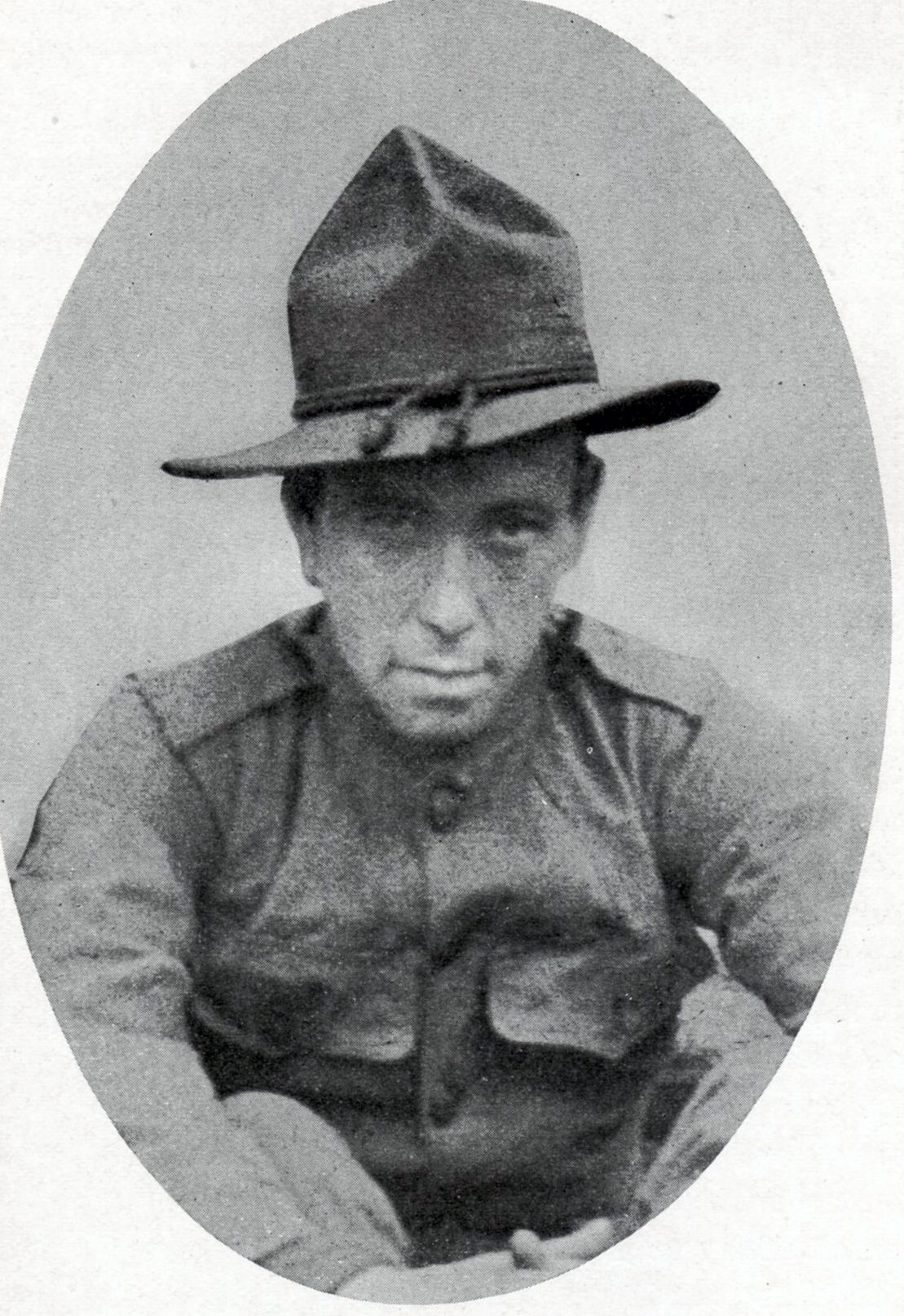
Pvt Lawrence Redmond KIA
The first C Batteryman to give his life for the cause. Redmond was struck by a bomb from an enemy airplane while on detached service with the French in the Chemin-des-Dames Ridge. Died in the French Military Hospital at Soissons, March 21, 1918.
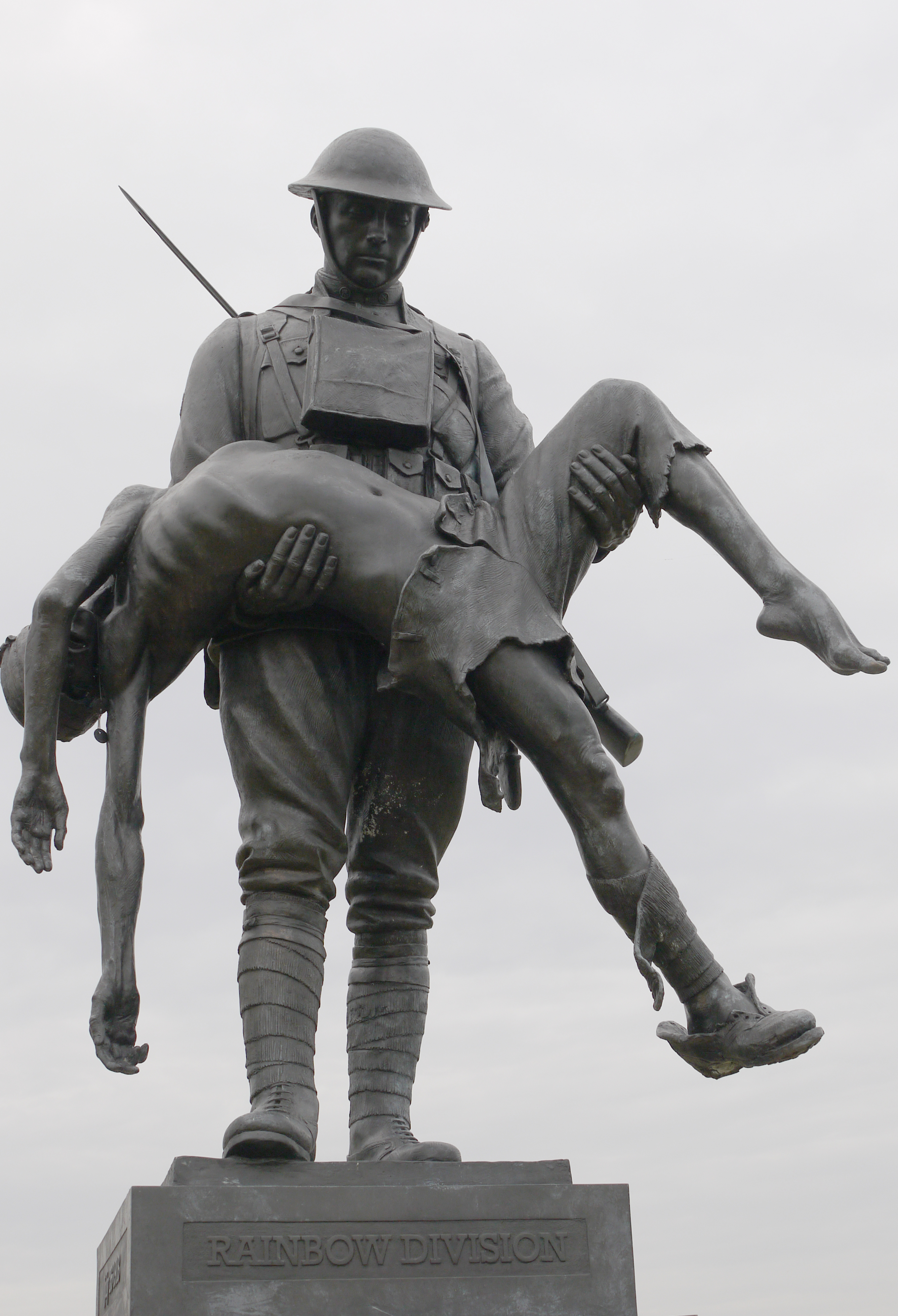
Memorial to the valor of the 42nd
Memorial in Fère-en-Tardenois (France)
Pascal3012 / CC BY-SA (https://creativecommons.org/licenses/by-sa/4.0)
https://commons.wikimedia.org/wiki/File:M%C3%A9morial_42e_(1).JPG
Excerpt from the "War Story of C Battery, One hundred and third US Field Artillery"
On the Western Front
Chemin-des-Dames, France. Near a cemetery site where a single German machine gunner had accounted for nearly two hundred poilus in the battle of the previous October.
"At about two o'clock in the afternoon, the arrival of the first shell afforded a new sensation, although the explosion itself was no more responsible for the open-mouthed astonishment of the batterymen than the miraculous disappearance of the French. Those who had been unable to make cover had flattened themselves on the ground in the fine imitation of the American Pancake. During the short bombardment which followed the boys speedily learned to emulate their veteran friends."
Excerpt from C Company 150th FA diary:
"March 11, 1918
"Fired twenty-nine rounds on Huez Farm. Adjustment by aerial observation, Adjustment satisfactory up to cessation of fire. Between 10:45 and 11:00 8 enemy shells, calibre 105, landed about 200 meters in our rear. One dud. Between 12:00 and 14:00, 20 enemy shells, calibre 105, landed about 500 meters to our right."
Composition of the 42nd
- Headquarters, 42nd Division
- 83rd Infantry Brigade
- 165th Regiment (formerly 69th Infantry, New York National Guard)
- 166th Infantry Regiment(formerly 4th Infantry, Ohio National Guard)
- 150th Machine Gun Battalion (formerly Companies E, F, and G, 2nd Infantry, Wisconsin National Guard)
- 84th Infantry Brigade
- 167th Infantry (formerly 4th Infantry, Alabama National Guard)
- 168th Regiment (formerly 3rd Infantry, Iowa National Guard)
- 151st Machine Gun Battalion (formerly Companies B, C, and F, 2nd Infantry, Georgia National Guard)
- 67th Field Artillery Brigade
- 149th Field Artillery Regiment (75 mm) (formerly 1st Field Artillery, Illinois National Guard)
- 150th Regiment (155 mm) (formerly 1st Field Artillery, Indiana National Guard)
- 151st Field Artillery Regiment (75 mm) (formerly 1st Field Artillery, Minnesota National Guard)
- 117th Trench Mortar Battery (formerly 3rd and 4th Companies, Coast Artillery, Maryland National Guard)
- 149th Machine Gun Battalion (formerly 3rd Battalion, 4th Infantry, Pennsylvania National Guard)
- 117th Engineer Regiment (formerly Separate Battalions, Engineers, California and South Carolina National Guards)
- 117th Field Signal Battalion (formerly 1st Battalion, Signal Corps, Missouri National Guard)
- Headquarters Troop, 42nd Division (formerly 1st Separate Troop, Cavalry, Louisiana National Guard)
- 117th Train Headquarters and Military Police (formerly 1st and 2nd Companies, Coast Artillery, Virginia National Guard)
- 117th Ammunition Train (formerly 1st Ammunition Train, Kansas National Guard)
- 117th Supply Train (formerly Supply Train, Texas National Guard)
- 117th Engineer Train (formerly Engineer Train, North Carolina National Guard)
- 117th Sanitary Train (165th–168th Ambulance Companies and Field Hospitals)
- 165th Ambulance Company (formerly 1st Ambulance Company, Michigan National Guard)
- 165th Field Hospital (formerly 1st Field Hospital, Washington, D.C. National Guard)
- 166th Ambulance Company (formerly 1st Ambulance Company, New Jersey National Guard)
- 166th Field Hospital (formerly 1st Field Hospital, Nebraska National Guard)
- 167th Ambulance Company (formerly 1st Ambulance Company, Tennessee National Guard)
- 167th Field Hospital (formerly 1st Field Hospital, Oregon National Guard)
- 168th Ambulance Company (formerly 1st Ambulance Company, Oklahoma National Guard)
- 168th Field Hospital (formerly 1st Field Hospital, Colorado National Guard https://en.wikipedia.org/wiki/42nd_Infantry_Division_(United_States)
Army Sanitation
Humans have the distinction of having there very own lice. In wartime conditions, months in the trenches in close quarters with other unwashed soldiers, the lice flourished. The WWI soldier, with their never-ending wry humor, adopted them and named them “cooties”. Serious attempts were made to rid the offensive insects. The Sanitation Corps waged a war against the pests. The soldiers disrobed and their clothes were baked in steam and sulfur to cook the bugs. They would freeze waiting for their clothes but were bug-free until they retired to their hay or tree branch mattresses in the trenches. The army had large cement chambers for the soldiers to sit in and steam and scrub themselves clean, the heat required to kill parasites was hard for the soldiers to endure, and they called them “Hells kitchens”.
Cooties can be serious, lice, and the ever-present rats, transmit disease and it is estimated that over 70% of duty time lost was due to disease. Typhus can be fatal and caused many deaths among the soldiers.
Rice size lice have inflicted armies for thousands of years. In WW 1 they were named after a British slang term for a biting bug. Lice were brought from France, India, England, and American and reproduced themselves into a hearty biting menace. The veterans adopted the name Cootie and formed a reunion group, The Military Order of the Cootie, complete with a uniform of a ruffled shirt, red pants, and a bug emblem on the vest. The members of the Order of the Cootie would entertain veterans in the hospitals after the war. They continue today, working with VA hospitals and support groups.
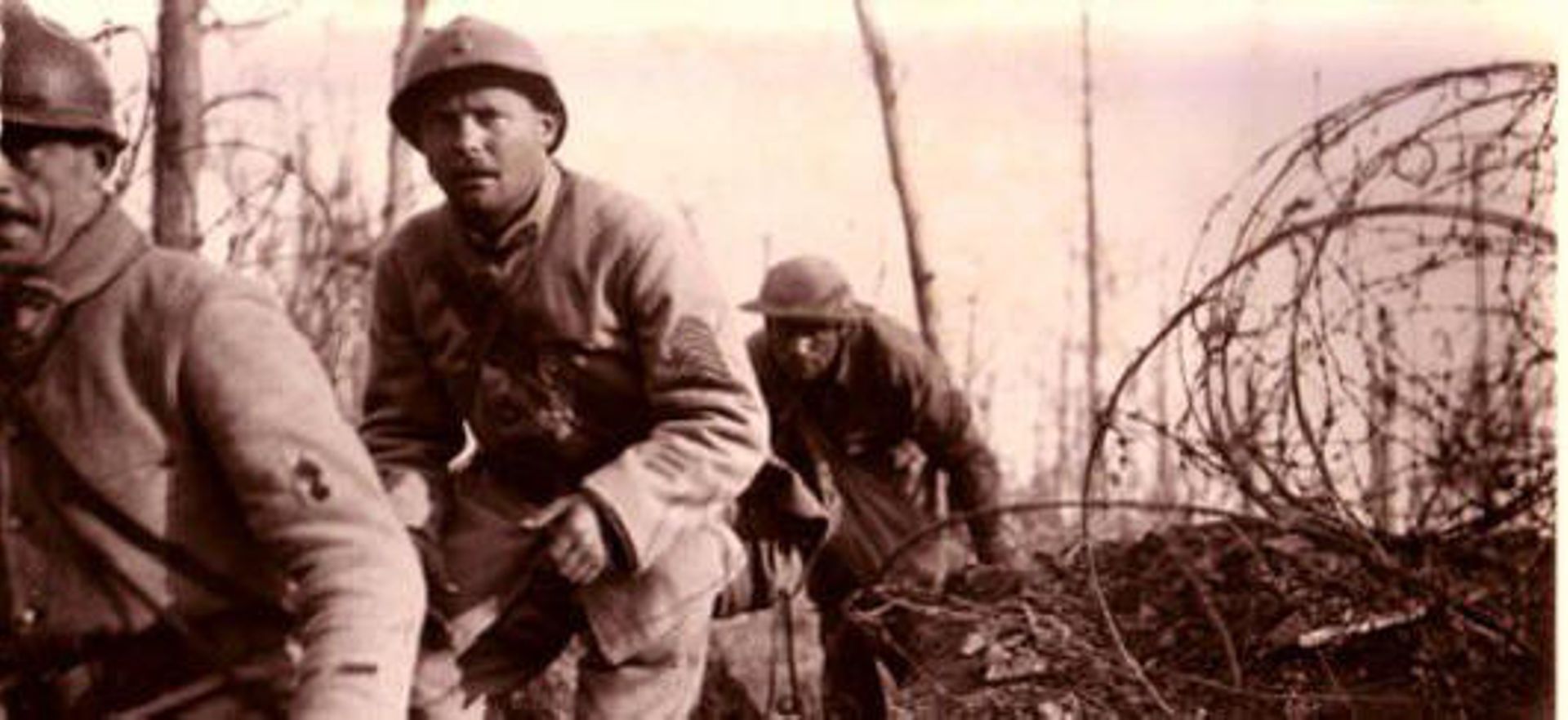
Frenchmen and American 168th Inf., coming over the top with sacks of Grenades, Badonville, France
National Archives Photo 8341,
Courtesy of Indiana War Memorial
Letter from Harry A. Ludlow,
150th Field Artillery, 42nd Div., Pvt.
Marion County
Although Mail service between American soldiers in the folks back home is being improved as rapidly as possible, it often happens that the soldiers are situated where, for a few weeks, they do not have access to the post office and consequently, the mail accumulates. The men all try to impress on the relatives and friends that no news is good news.
H. A. Ludlow, 971 Lexington Avenue has received a letter from his son Harry A. Ludlow Jr., who is a member of the 150th field artillery, the April 3 in which he says:
“It has been a long time since I have written, probably five or six weeks, pretty busy and I haven't been near the United States Post Office, so you see I had no chance to write. All our mail is handed to the United States Post Office and we can’t use the French ones, so if you're not near a United States one you can't write. Since writing last I have received seven of your letters, the last dated March 11th.
“I am feeling fine and am in good spirits and having lots of experiences - and also lots of cooties if you don’t know what a cootie is I will explain that it is a small animal about the size of two pinheads, usually found in the inside of the undershirt, itchy when you get a good mass of cooties working overtime. The only remedy for them is a complete change of underwear. The underwear should be boiled, and after drying the dead cooties should be picked off.
“As I write, I can hear the big guns having a little evening entertainment. Have seen many fights, saw raids, and been under shell fire. Have received copies of The News and it has our locations pretty close. Didn't see how it got by the censors, but surely did I see by the papers I receive from you that you all know we are at the front, and from now on we are going to give the Boche ‘Hell’. I didn't get out to the gun positions very often. Hop on a truck once in a while when I'm not busy and go out to see what was going on. Had a nice time on one trip, got shelled and everything, but no one was hurt.
“When we were over at our first town, every time the air raid signal would start going all of the Frenchies would head for the bomb proofs and the Americans would dash out into the street to see it. It is a very foolish thing to do, but American curiosity must be satisfied, so out they come. In one town especially, the boys use to have lots of fun watching raids. When the signal is given the boys would rush into their billets and the officers thought they stayed in until the ‘all’s well’ signal is given, but there happen to be a back door in the building so boys would rush in the front door and out the back, and watch the battle.”
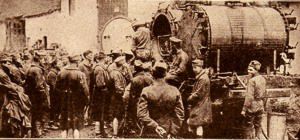
All the boys in France had a try at the sterilizing, de-verminatizing machine which rid their clothes of cooties.
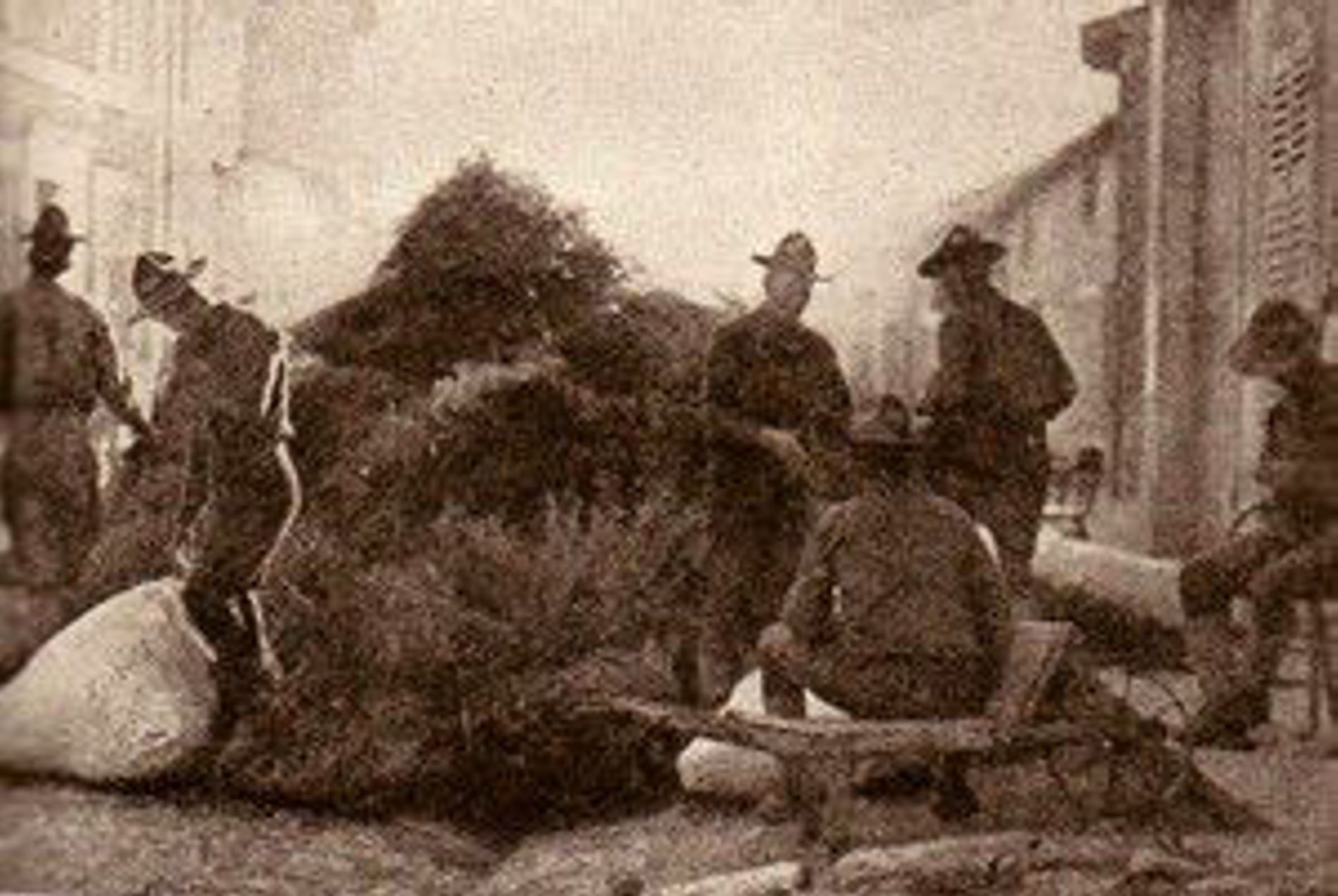
American soldiers making mattresses to use in their water-filled, mud-soaked trenches.
Freedom's Triumph Photo
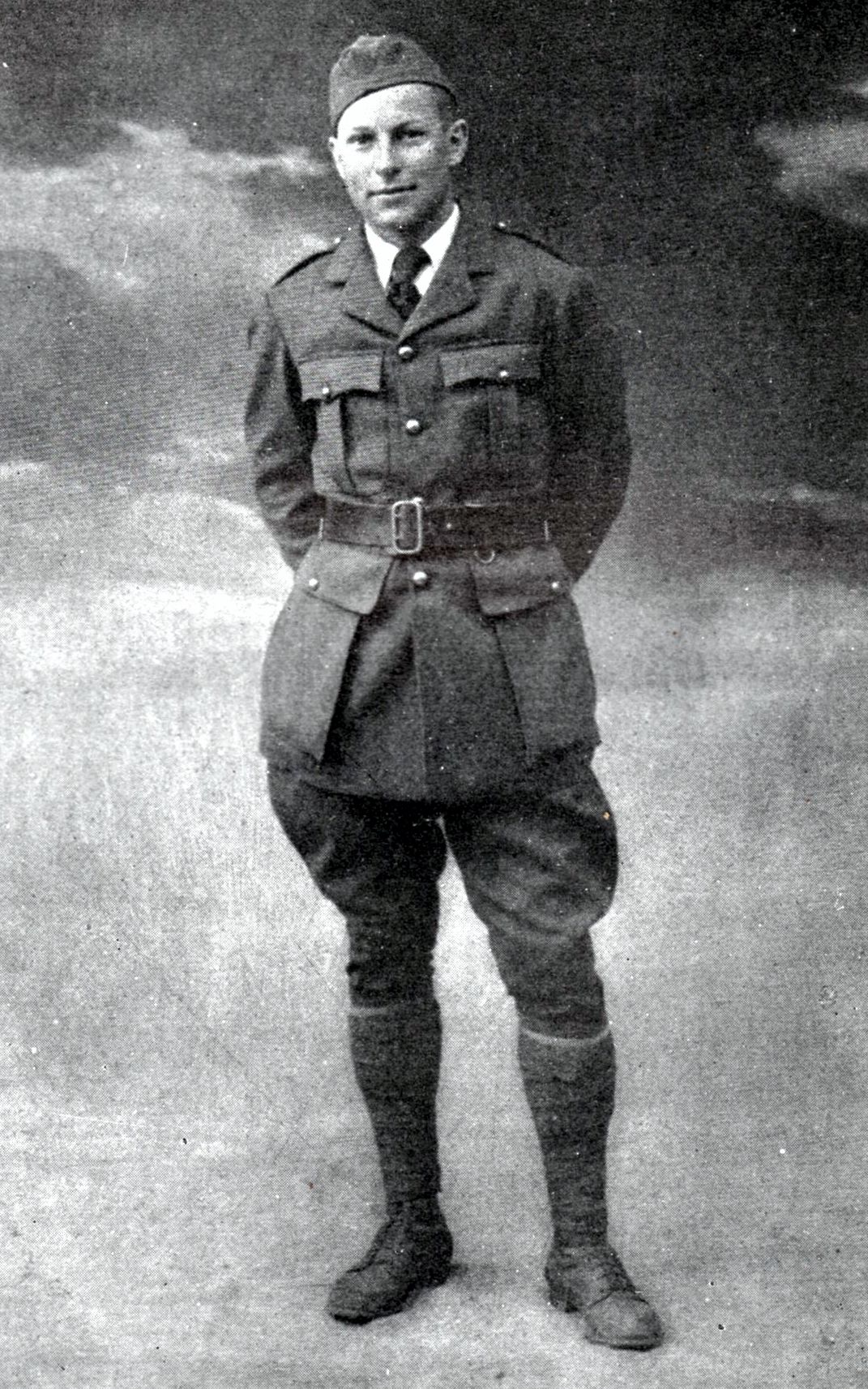
Charles Bacon
Served in France during 1917 with the Ambulance Service attached to the French Army. Joined C Battery at Saint-Nazaire while on his way back home. Killed in action near Samogneux, France Octobr 24, 1918. Recommended for heroism citation.
The War Story of C Battery
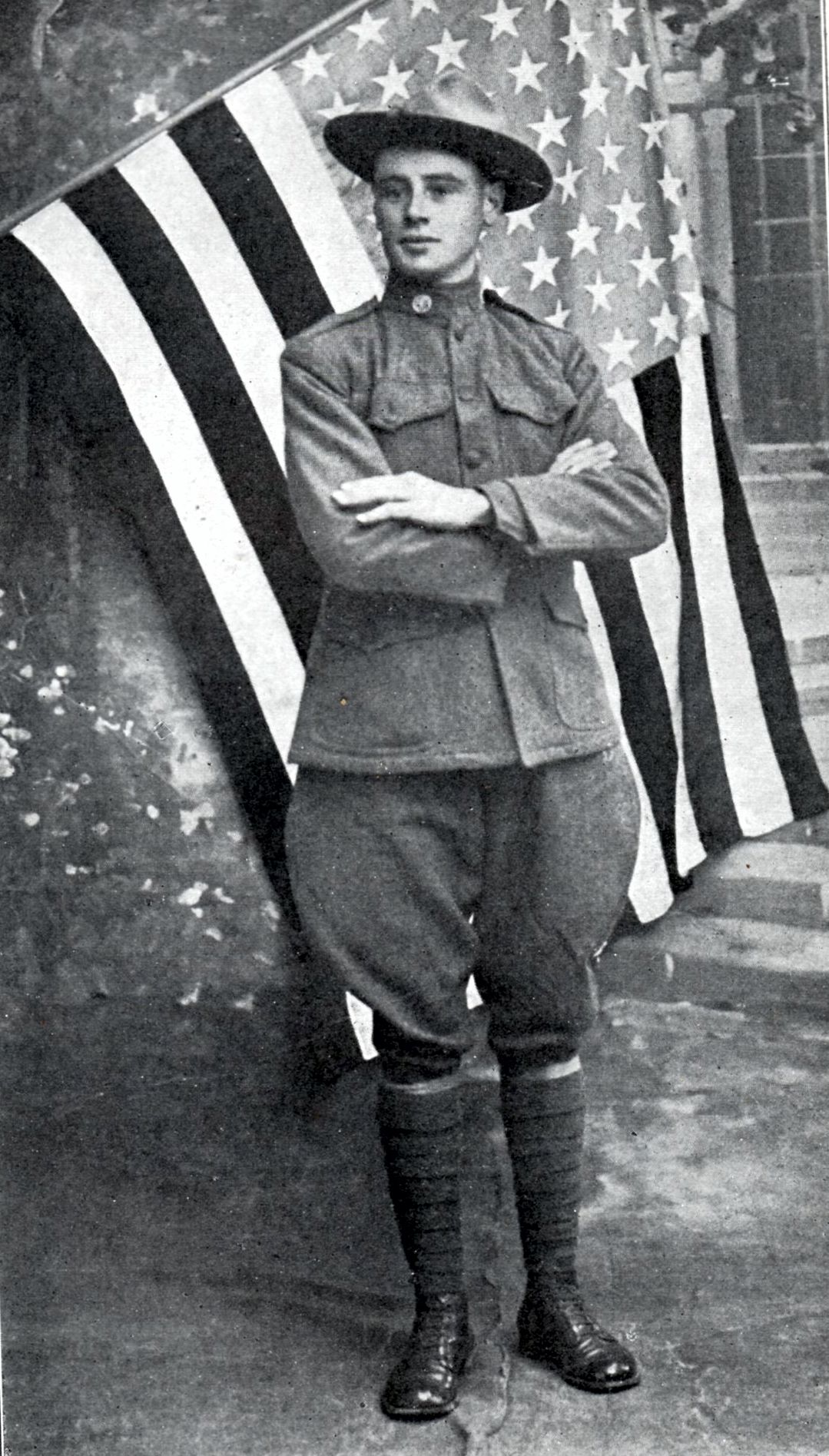
Anthony F. Sylvia
Died of Wounds rom the 2nd Battle of the Marne
The War Story of C Battery
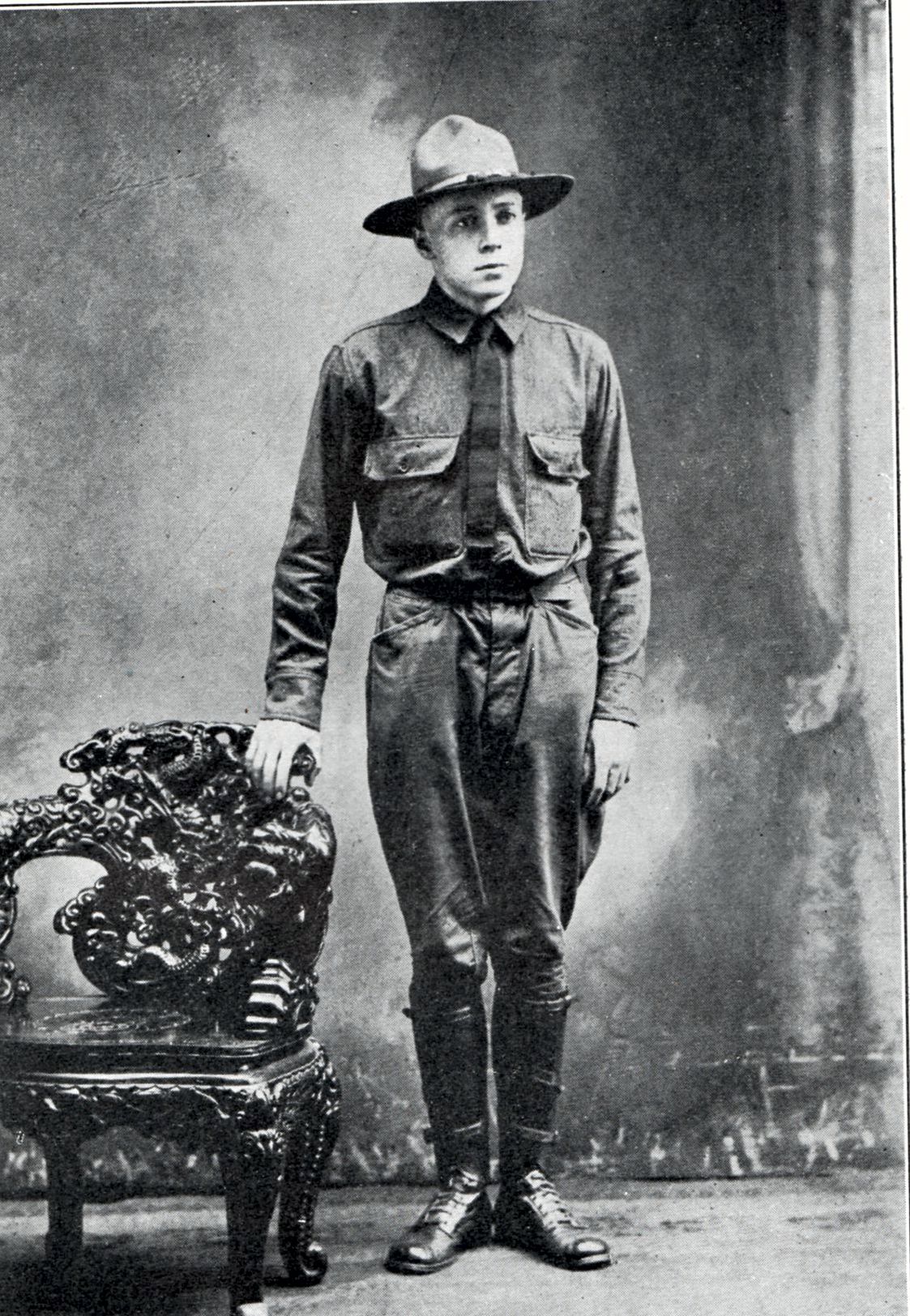
Gaskin P. Williams
KIA June 28, 1918, while battery was preparing to evacuate positions in the Toul Sector
The War Story of C Battery
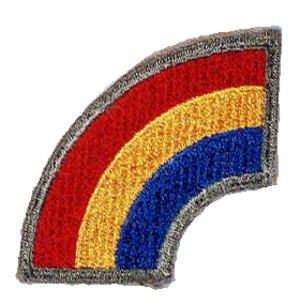
42nd Rainbow Shoulder patch. Indiana War Memorial
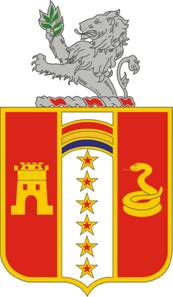
Distinctive Unit Insignia of the 150th Field Artillery, 42nd Div.
By pentagon.mil Wikimedia
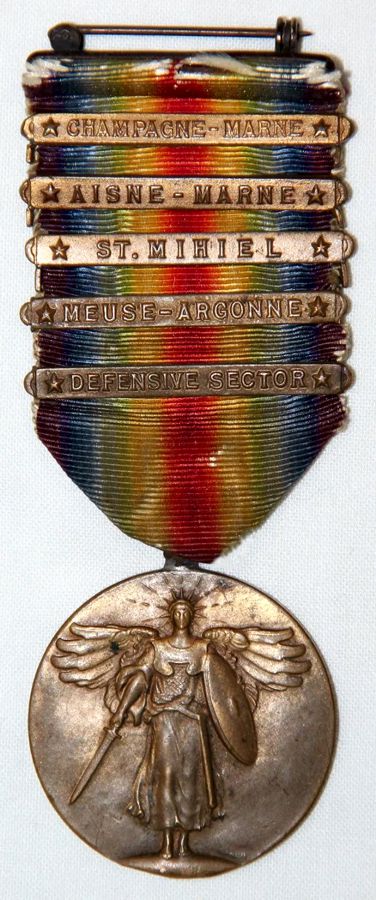
42nd Div WW1 Victory medal
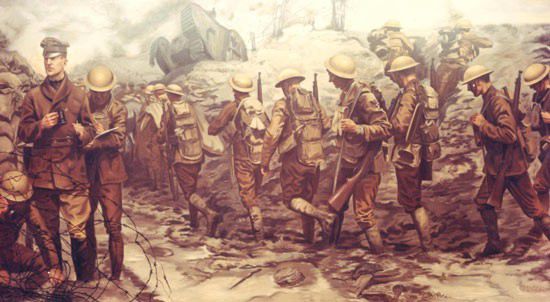
Postcard of "Mac Arthur in the Trenches" mural by Alton S. Toby depicting
the frustrations of the 42nd with a disabled tank overshadowing a muddy, rat-infested, shell smashed trench.
The mural consists of six 7' x 13' murals depicting the accomplishments of General Douglas MacArthur at the MacArthur Memorial in Norfolk, Virginia.
Frank Roth Huntington, Field Artillery,
Rainbow Division,
Decatur County
“Was firing a six-inch Howitzer gun when it blew up causing my injuries (wounded in the left forearm and thigh at Baccarat, Lorraine Sector) at the same time killing Paul Cross and Bernard Hurst of Shelbyville, Indiana.
This happened at Baccarat, France, on June 5, 1918.
William Jesse Stanley, Headquarters Co.,
150th Field Artillery, 42nd (Rainbow) Div.,
Grant County, Indiana
Death Valley, being about the most thrilling and heart-rendering experience, I might say. Never ceasing shells, gas and at night we were said to have five or 10 tons of Fritzie’s bombs, no rest for the wicked, not enough room in the dugout for all to sleep and hardly enough nerve to try it elsewhere. One night I got my nerve up and another fellow and I went to sleep in what had been an old German stable. Don't know how long we slept, but woke up with a horrible feeling, a G.I. can had struck just about 4 feet from our shack and was a dud at that. I have seen fellows make speed, but none like I made from this dugout.
Henry W. Brockenbrough, 2nd Lieutenant,
Field Artillery,
Tippecanoe County, Indiana
Entered service in May 1917. Stationed at Ft. Harrison, Ind., where he received a commission in August 1917. Sailed for France Sept. 11, 1917, landing Oct. 2, 1917. Attended Field Artillery School at Saumur for three months. Assigned to the 151st Field Artillery, Battery B, 42nd (Rainbow) Division in January 1918.
Went to the front in February 1918, the 15lst F. A., being in active service with the (Rainbow) Division. Saw service on the Lorraine front for 110 days, and later was moved to the Champaign sector and participated in the offensive from July 15, 1918, to July 18, of the same year. Took active part in the Chateau-Thierry offensive and the St. Mihiel drive, and last at the Verdun sector.
Was wounded at Verdun Oct. 14, 1918, when serving with the Infantry, and was removed to Base Hospital No. 32, where he was a patient for three weeks. Was on his way back to join his battery, Nov. 11, 1918, the day of the signing of the armistice. Also served with the Army of Occupation in Germany.
Born at Lafayette, Ind., July 6, 1893, son of Mrs. Nell Wallace Brockenbrough.
Graduate of Purdue University. His home is Lafayette. Ind.

Panorama of Battery C, 150th Infantry, 42nd Division
100 Years ago the Battle of Croix Rouge Farm commenced in France. The thirty-five members of the New York Army National Guard's 42nd Infantry Division gathered with French soldiers at the foot of the Memorial Statue near the French village of Fere-en-Tardenois to celebrate the anniversary on July 2018.
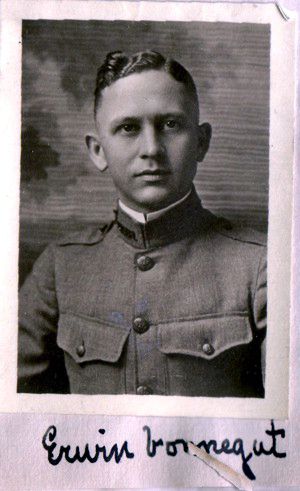
Erwin Vonnegut
1st Lt, 12th US Aviation Observation Squadron
150th Field Artillery
Marion County, Indiana
Overseas, Oct. 18th, 1917. Served as an aerial observer. After the battle and Chateau-Thierry, in which he participated, he was assigned to Headquarters, 1st Army Corps as an assistant to the Chief of Air Service.
Battles: Chateau-Thierry, St. Mihiel, Argonne
Served in the Army of Occupation in Germany
2nd cousin of Kurt Vonnegut
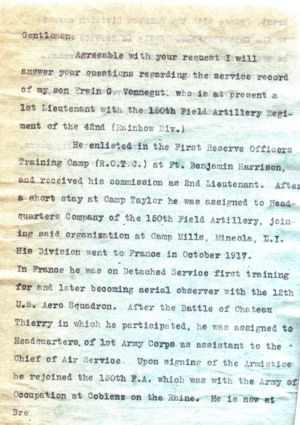
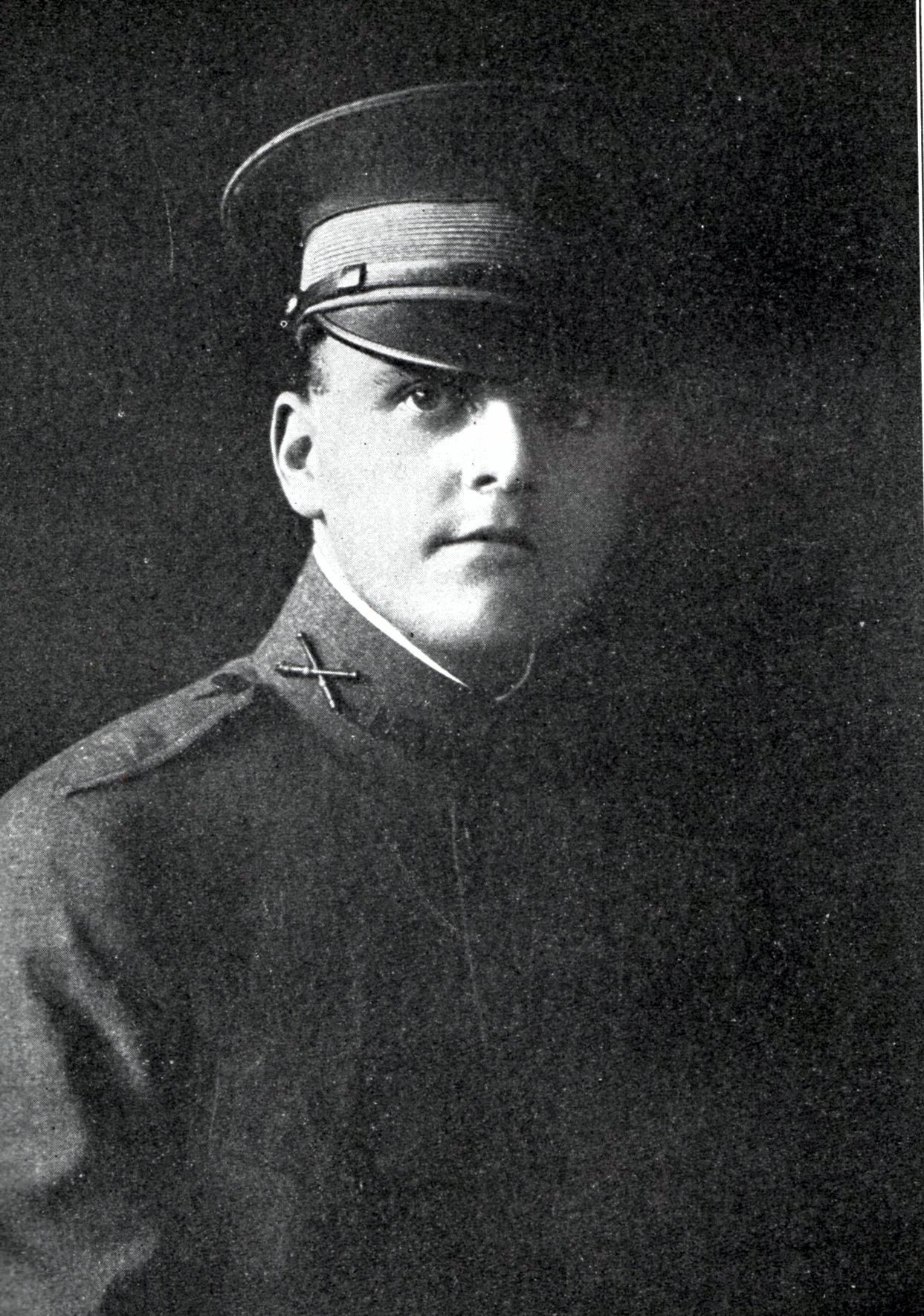
Lt. Lawrence S. Ayre
Killed in Action April 20, 1918 at Seichprey.
The War Story of C Battery
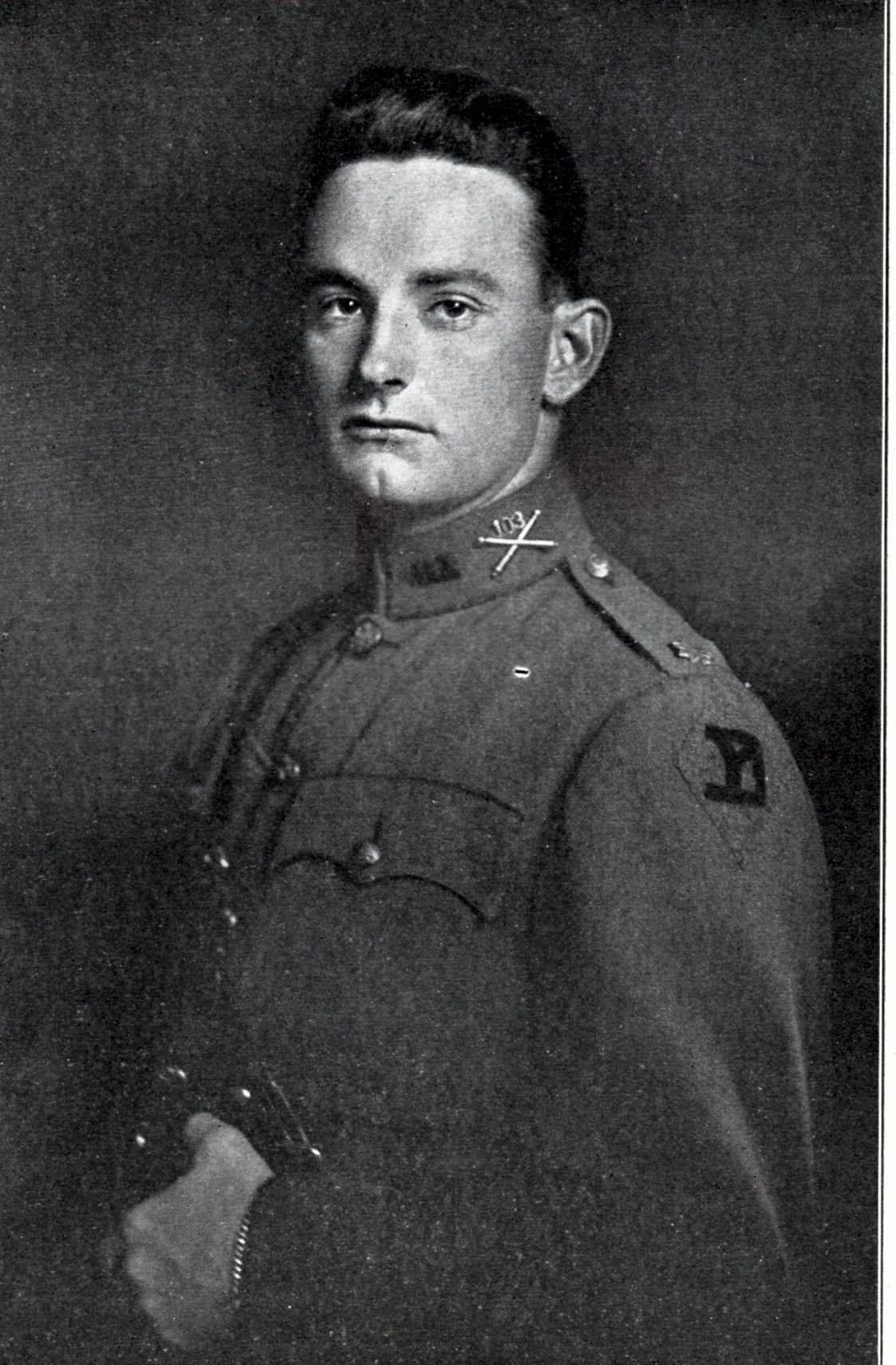
Major Harold R. Barker
Commander of 2nd Bn, 103d FA while C battery was at Verdun; a fearless fighter, devoted to his men and loved by them.
The War Story of C Battery
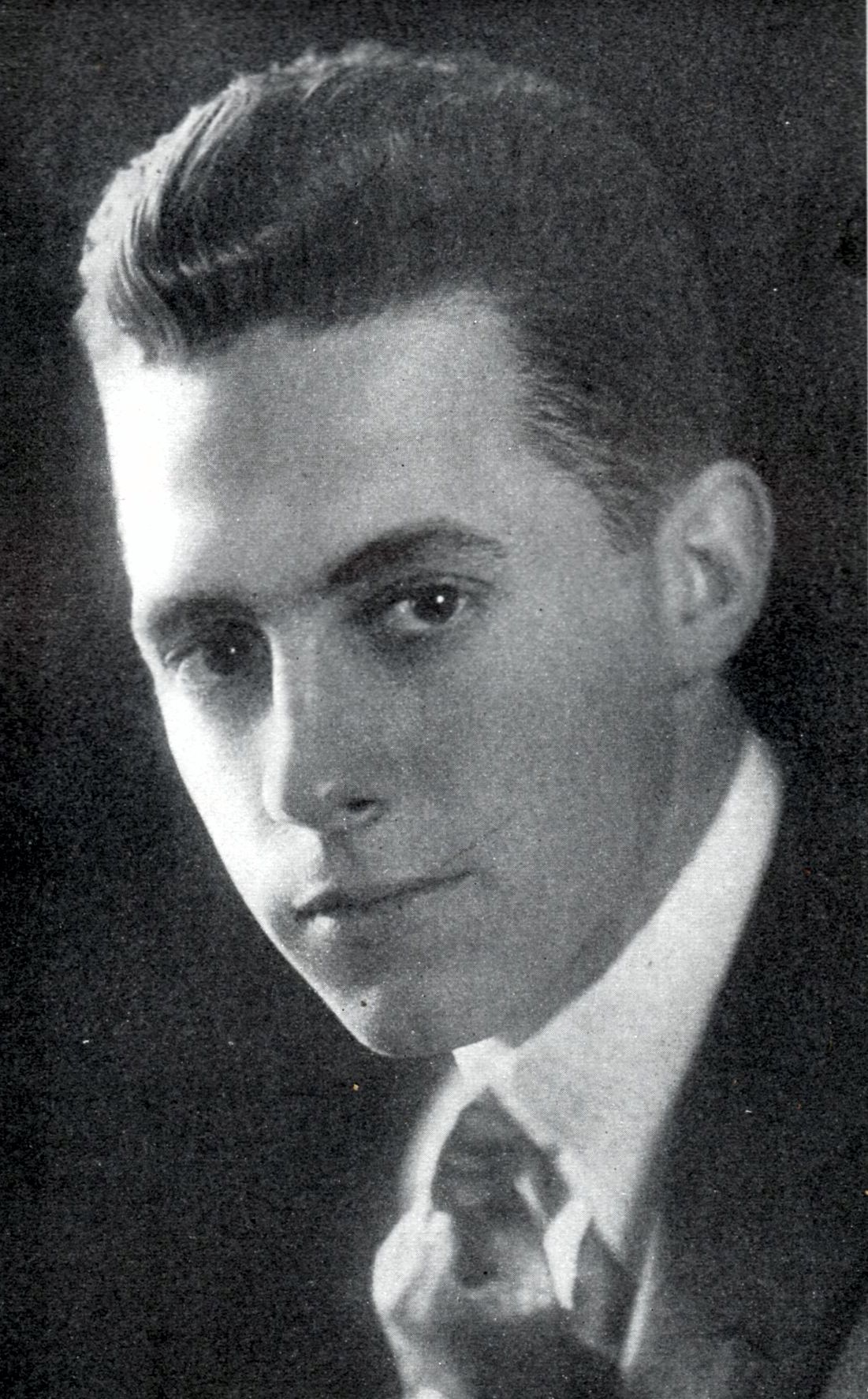
Sgt Richard J. Dennis
Chief of Third Section up to October 24, 19118 when he was killed in action while his piece was located at the advanced position near Samogneux, France.
The War Story of C Battery